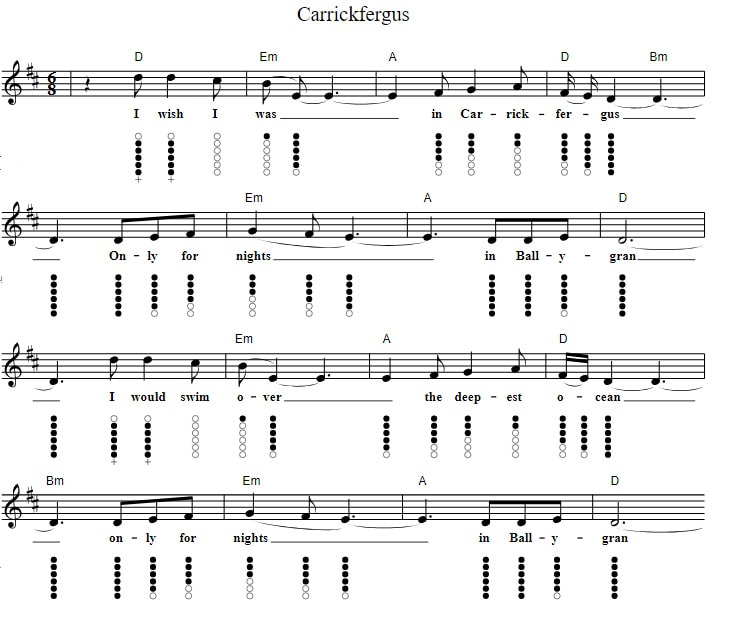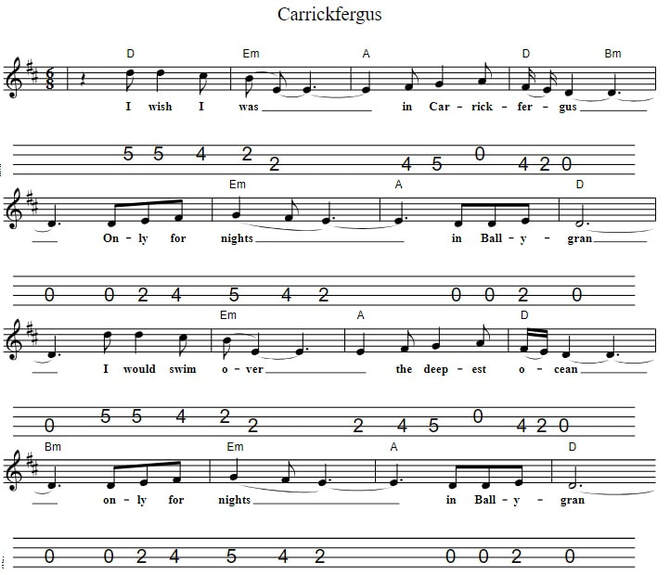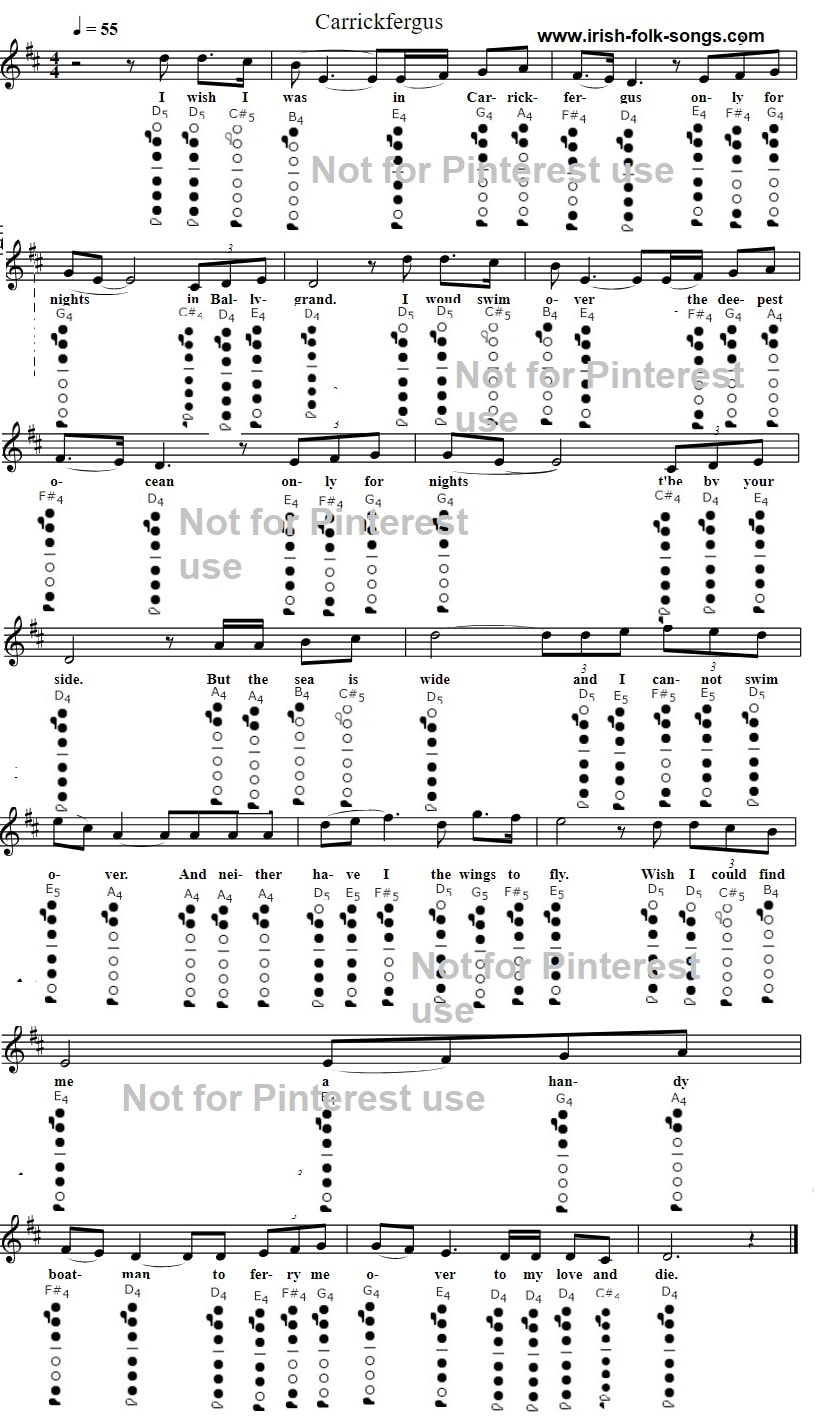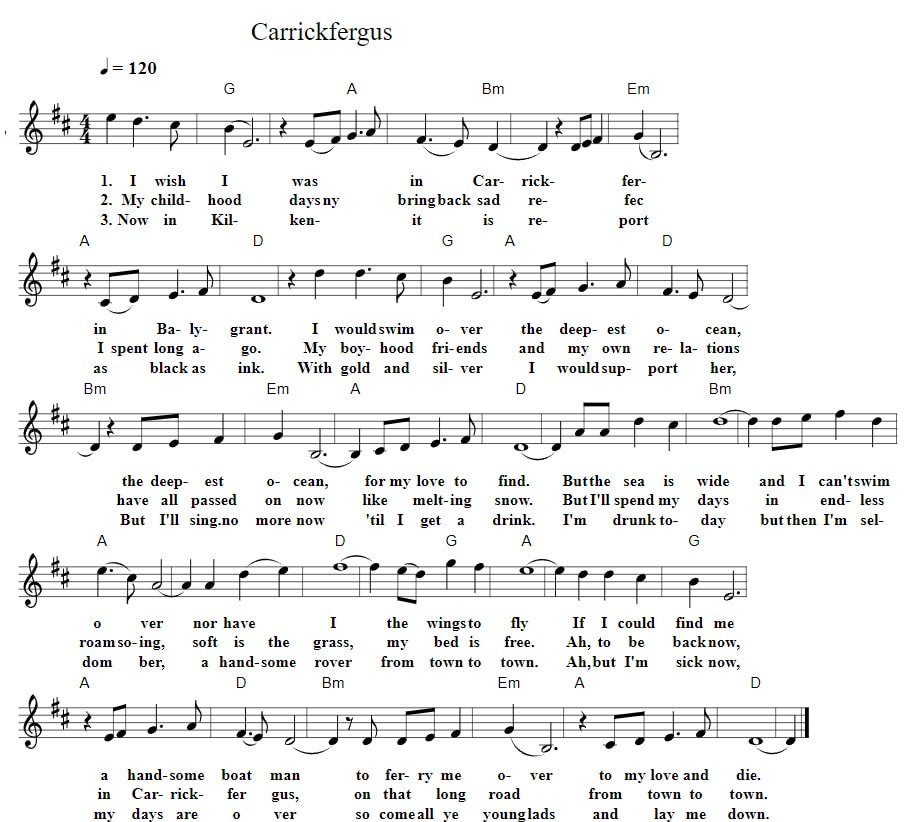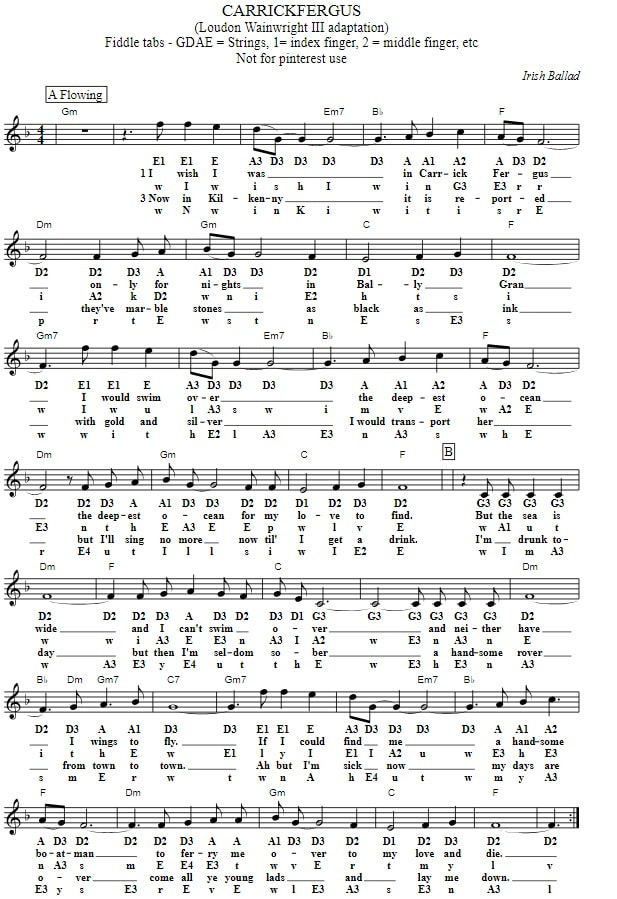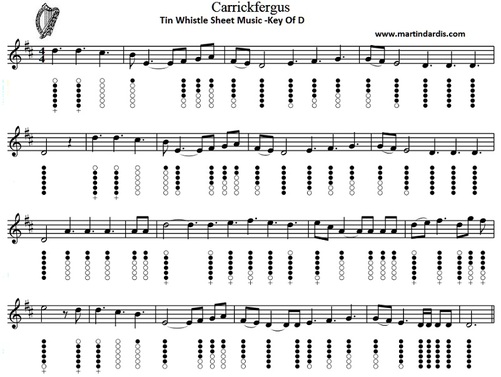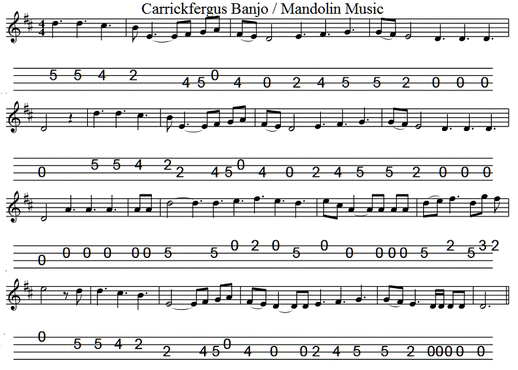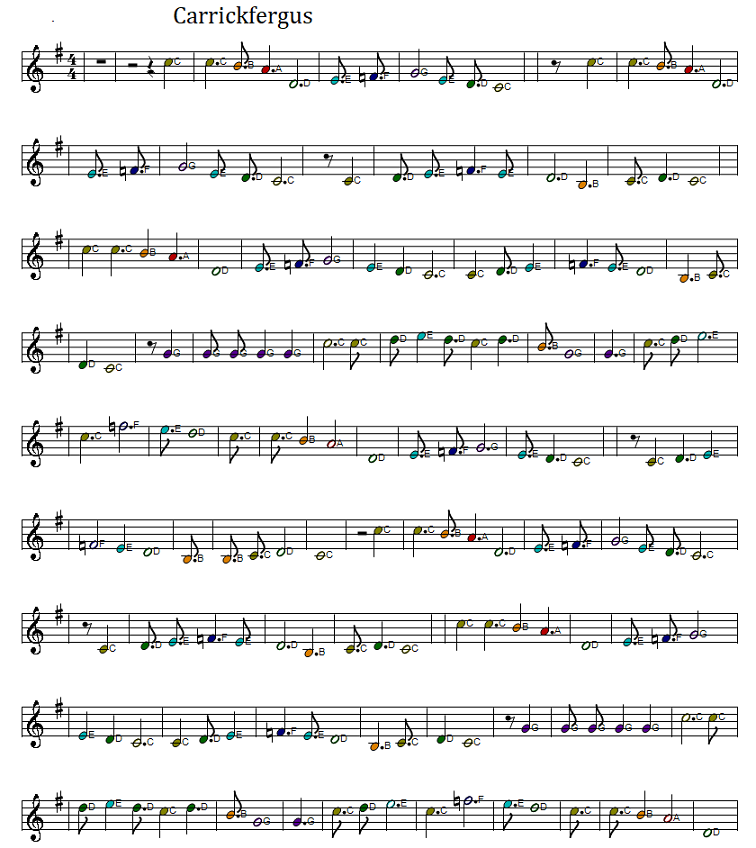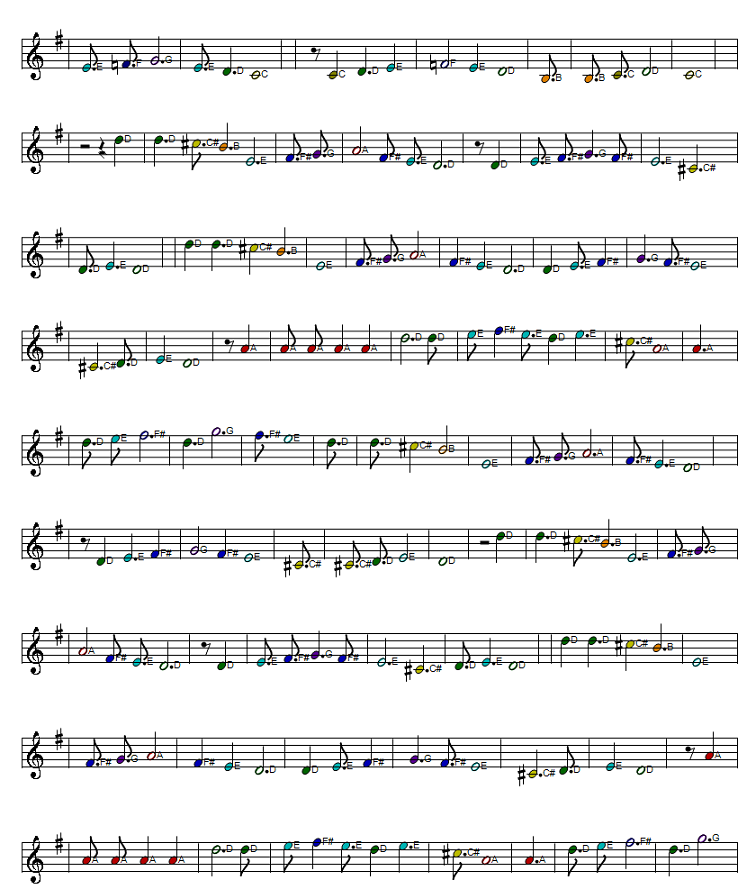Carrickfergus Tin Whistle Sheet Music Notes
Carrickfergus easy flute notes finger chart included. The full sheet music score with chords is included with the time signature being 6/8. And banjo / mandolin tab in the key of D Major. Probably first recorded by Dominic Behan in the 1961 and later by The Clancy Brothers and Johnny McEvoy. Collected by the actor Peter O'Toole. The song is most likely a traditional one as there is no evidence of the writer anywhere. Brendan Behan said he wrote the second verse. The tin whistle music is set for a D whistle and the second is in key of C. The first is the easy one. The song lyrics and chords of Carrickfergus are also here for guitar players. The song is slow and melancholy with the man dying at the end of the story.Carrickfergus violin sheet music for beginners now added.
| carrickfergus-tin-whistle-tab.pdf |
PDF File Of The Piano Score With Chords
| carrickfergus-piano-sheet-music-with-chords.jpg |
Mandolin tab for Carrickfergus in the key of D Major
Below is the list of sheet music and tin whistle songs that are in my ebooks. This is the largest collection of tin whistle songs ever put together.[over 800 songs ] Including folk, pop and trad tunes plus German And French songs along with Christmas Carols.
All of the sheet music tabs have been made as easy to play as was possible.
The price of the ebooks is €7.50
All of the sheet music tabs have been made as easy to play as was possible.
The price of the ebooks is €7.50
Below is another version of Carrickfergus piano sheet music in a lower key.
Carrickfergus piano sheet music with chords. Key of D Major.
Carrickfergus Full Sheet Music Score in G Major
